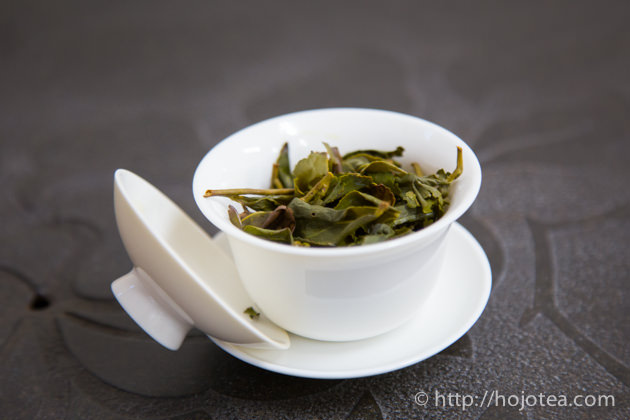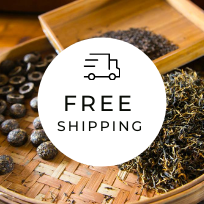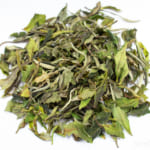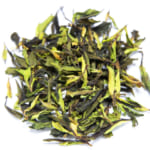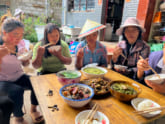- HOME >
- Teapot and Tea Equipment
A Shiboridashi, the perfect alternative of a Gaiwan
- [2017.12.28] Posted By Akira Hojo
Shiboridashi is one of the tea brewing equipments. In Japan, this equipment is often introduced for brewing Gyokuro or Sencha. However, if we understand its characteristics well, we will notice that it is rather more suitable for brewing pu-erh tea or fermented tea.
It is not a must to use Shiboridashi for Gyokuro
Generally, a lot of people associate Shiboridashi as equipment for brewing Gyokuro or premium Sencha such as hand-rolled sencha. This prejudice was made due to the overwhelming number of information written in books and internet articles. But what is the reason that Shiboridashi is meant for those Japanese green teas? Is there any advantage of using Shiboridashi for brewing those teas?
One of the reasons could be Shiboridashi provides sufficient space to allow the tea leaf to unfold nicely in hot water. However, to achieve this purpose we can also use a flat-shape teapot or teapot with bigger volume. In addition, based on my experience, the shape of teapot does not really affect the taste or flavor of tea. Even if it is brewed in a small or slim-shape teapot, the leaf of Gyokuro is able to unfold sufficiently and it produces good flavor and taste.
I believe that Shiboridashi has three advantages as follow:
- Fast flow
- Easy to put and clean any kinds of tea
- The gap between a lid and a body is fixed. So no trouble for adjustment.
Fast flow
It is an advantage that Shiboridashi has no filter. So the flow of tea is very smooth like Gaiwan. In addition, we do not have to adjust the gap like when using Gaiwan. As such, there is less chance that our fingers get in contact with hot water. A well-made Shiboridashi has a lid fit well to the body and it is like crescent moon shape. This gap performs as a filter to hold the tea leaves inside the body and only liquor flows out. Only highly-skilled artist is able to work out an appropriate gap of a Shiboridashi, and that reflected the maker’s skill. Too wide or too narrow gap affects its function.
The following video shows Kobiwako Shiboridashi made by Maekawa Junzo. It demonstrates the flow of Shiboridashi. He has a pretty good skill in making the gap.
The above video demonstrates the water flow from Shiboridashi.
Easy to put and clean any kinds of tea
The structure of Shiboridashi is very simple. Once the lid is removed, its shape is just like a cup. Needless to explain that it is extraordinarily easy to put or remove tea leaves. In particular, you will enjoy its benefit when you are brewing the tea with bigger leaves such as Phoenix Dan Cong Oolong, Wuyi Oolong or Pu-erh tea.
The gap between the lid and body is fixed. So no trouble in adjustment.
If you have ever visited tea house in Taiwan or China, you might have noticed that tea professionals often use gaiwan for tea brewing.
The design of gaiwan is very simple. It gives very fast flow. It is very easy to put or clean tea leaves too. However, it requires a lot of experiences to handle the gaiwan in order to control the flow of tea. If too wide, tea leaves may come out. If too narrow, tea gets stuck. Honestly, even I am using gaiwan to brew tea every day, sometimes I still get my fingers scalded. It always requires full concentration when brewing tea using the gaiwan.
As for Shiboridashi, we do not have to adjust the gap between the lid and the body. So it makes our tea life becomes easier.
Example of brewing tea using Shiboridashi
Please refer to the video below for the demonstration of brewing black tea with Shiboridashi. We use the same parameter for green tea. The parameter is as follow:
• Green Tea and Black Tea
Pour in boiling water and leave it for 10 seconds to pre-heat the Shiboridashi.
Put the tealeaf, and pour in boiling water. Rinse for 10 seconds and pour off the water.
The 1st brewing: 5-10 seconds
The 2nd brewing onwards is quick infusion for less than a few seconds.
• Pu-erh, Oolong and White Tea
Pre-heating for 10 seconds with boiling water
1st Rinsing for 10 seconds with boiling water
2nd Rinsing for 10 seconds with boiling water if tea is tightly rolled (e.g. Taiwan high mountain oolong), or compressed tea, and 5 seconds if loose tealeaf such as mao-cha.
1st Brewing 5-10 seconds
2nd Brewing onwards is quick infusion for less than a few seconds.
You may feel odd that we rinse black or green tea. This is to increase the brewing temperature. With this method, we can have purer flavor, more intense and high clarity in taste.
We often think that it is such a waste and once tea is rinsed it can’t lasts for more brewing, and hence we may not wish to rinse the tealeaf. The actual fact is the rinsed tea lasts more brewing. In addition, the taste of tea brew with or without rinsing is totally different. If you feel 10 seconds is too long for pre-heating, you can start from 5 seconds.
In Japan, normally people have prejudice that Japanese green tea is supposed to be brewed at less than 80 degree C in order to avoid the bitterness. However, you may surprise that high temperature brewing works pretty well. If we make the first brewing shorter, tea won’t taste bitter. This brewing style is rather essential for the green tea from natural farming garden, because of tea contains very less umami but plenty of poly phenols. This particular brewing technique is called Gong Fu Brewing. It was originally developed for brewing premium oolong tea.
The above video demonstrates the brewing technic of black tea using Shiboridashi. I am so sorry but the subtitle is in Japanese. Anyway the subtitle is less important for this content.

Related Articles
How to get the latest update on HOJO Tea?
1. Follow Twitter, 2. Click "Like" on Facebook, and 3. Subscribe in newsletter. You can have the latest tea news from HOJO Tea.
 Subscribe the Newsletter to enjoy the privileges
Subscribe the Newsletter to enjoy the privileges- You may receive a free sample upon purchase, or you may have the priority to purchase special products. So please remember to subscribe our newsletter as well as the social network.
- Yunnan Chun Jian Green Tea from High Mountain Gardens
- Yunnan Chun Jian Green Tea is now available.This tea is made from naturally grown leaves harvested from high mountain gardens at 2100m above sea level. It has a rich, long-lasting lingering aftertaste, comparable to raw Pu-erh tea. Yunnan as a Distinctive Tea Growing Region Over the past 20 years, we have explored a wide range …
- Limited Loose Leaf Release of 2025 Da Xue Shan Wild Raw Pu-erh Tea
- We have released the 2025 loose-leaf version of Da Xue Shan Wild Raw Pu-erh Tea.This tea comes from wild tea trees that grow naturally in the high mountains of Yunnan Province, at elevations above 2000 meters. This year, we were only able to secure a small quantity for retail, and the current release is available …
NEW ARTICLES
 Yunnan Chun Jian Green Tea from High Mountain Gardens
Yunnan Chun Jian Green Tea from High Mountain Gardens- Yunnan Chun Jian Green Tea is now available.This tea is made from naturally grown leaves harvested from high mountain gardens at 2100m above sea level. It has a rich, long-lasting lingering aftertaste, comparable to raw Pu-erh tea. Yunnan as a Distinctive Tea Growing Region Over the past 20 years, we have explored a wide range …
 Limited Loose Leaf Release of 2025 Da Xue Shan Wild Raw Pu-erh Tea
Limited Loose Leaf Release of 2025 Da Xue Shan Wild Raw Pu-erh Tea- We have released the 2025 loose-leaf version of Da Xue Shan Wild Raw Pu-erh Tea.This tea comes from wild tea trees that grow naturally in the high mountains of Yunnan Province, at elevations above 2000 meters. This year, we were only able to secure a small quantity for retail, and the current release is available …
 2025 Da Xue Shan Wild White Tea Now Available from Yunnan
2025 Da Xue Shan Wild White Tea Now Available from Yunnan- The 2025 harvest of Da Xue Shan Wild White Tea is now available. Crafted from truly wild Camellia taliensis trees growing naturally in the high-altitude forests of Yunnan, this tea offers a purity and character unique to its origin. This year’s unusually dry climate during the withering season was ideal, resulting in a floral and …
 Why Do Some Teas Taste Astringent? Exploring the Causes and Mechanisms of Astringency
Why Do Some Teas Taste Astringent? Exploring the Causes and Mechanisms of Astringency- Tea can range from having no noticeable astringency to possessing a very strong one. What causes this astringency? This article explores the causes and mechanisms behind astringency in tea. Causes of Astringency Astringency arises from the binding of tea components to proteins in the oral cavity, creating a sensation of tightness or dryness. The tongue …
 The Impact of Heat Sources on Tea Flavor
The Impact of Heat Sources on Tea Flavor- It is widely recognized that the material of a kettle plays an important role in shaping the taste of water for brewing tea. Yet, an often overlooked but equally significant factor is the type of heat source used to boil the water. Different heat sources, whether gas, electric, charcoal, or wood fire, can impart distinct …
 New Release of High Mountain White Tea
New Release of High Mountain White Tea- We are pleased to introduce our High Mountain White Tea, sourced from a unique tea garden with two key features: 1. Located at an altitude of 2200-2300m2. Completely wild and untended The ideal natural conditions of this garden result in tea of exceptional quality, offering a pure and gentle, nourishing taste. High Altitude and Wild …
 New Release of Da Xue Shan Wild White Tea 2024
New Release of Da Xue Shan Wild White Tea 2024- We have released the 2024 Da Xue Shan Wild White Tea Loose Leaf. This tea was produced under our direct supervision during our stay in Yunnan Province, ensuring meticulous production management on site. Definition of Wild Tea in Yunnan Province People in Yunnan strongly associate Camellia taliensis with wild tea, regardless of where it is …
 New Release of Wild Pu-erh Jasmine Pearl
New Release of Wild Pu-erh Jasmine Pearl- Out of curiosity, we decided to create a jasmine tea based on Da Xue Shan Wild Raw Tea. This resulted in an exceptionally rare tea, not only in Japan but also in China. Custom Production Network for Jasmine Tea At our store, we source various types of base teas from different regions during the spring. …
 2024 Overview: Our Yunnan White Tea Quality, Process, and Weather Insights
2024 Overview: Our Yunnan White Tea Quality, Process, and Weather Insights- One of the teas we’ve been focusing on in Yunnan Province is white tea. Historically white tea has been produced in both Fujian Province and Yunnan Province for a long time. While white tea from Fujian Province is well-managed during processing, we are dissatisfied with the quality of the raw materials due to the use …
 Yunnan’s Hospitality Culture: Expressed Through Meals
Yunnan’s Hospitality Culture: Expressed Through Meals- In China, as a form of greeting, it’s common to say “你吃饭了吗?” which means “Have you eaten?” However, in Yunnan Province, the phrase “吃饭” is often used in various situations, more like “Eat, eat,” serving as an invitation to share a meal. Yet, with prolonged exposure to Yunnan, one comes to understand that these meal …
Shop Info

Address:Lot No. T-215, 3rd Floor, The Gardens Mall, Mid Valley City, Lingkaran Syed Putra, 59200 Kuala Lumpur
Tel: +603-2287-4537
Business Hour: 10am to 10pm
Category
- New Arrival at HOJO Online Shop
- Featured Articles
- Newsletter
- Types of Tea
- Origin of Tea
- Teapot and Tea Equipment
- Tea Column
- How to enjoy tea
- Tea Processing
- How to choose quality tea
- Tea constituents and functional effect
- Safety of Tea
- Foods
- Tea Business Operation
- Hobby and Outdoor Activity
- Ranking of Tea
- Video
- FAQ
- Media Release
Profile

- AKIRA HOJO
- I invite you to experience my tea selections.I was born in Nagano, Japan. In university, I studied agricultural chemistry, and I have the master degree in food science. I worked in Japanese food industry for 10 years. I involved in R&D, QC and QA. As a factory manager, I implemented ISO9000 series and managed the factory.
- The Art of Tea Magazine
- We posted the article on “The Art of Tea Magazine No.9, the magazine is published in Taiwan. We featured some scientific view about the tetsubin
- New Straits Times
- The Malaysian National Newspaper, New Straits Times featured HOJO Tea on 17-Oct-2007.






